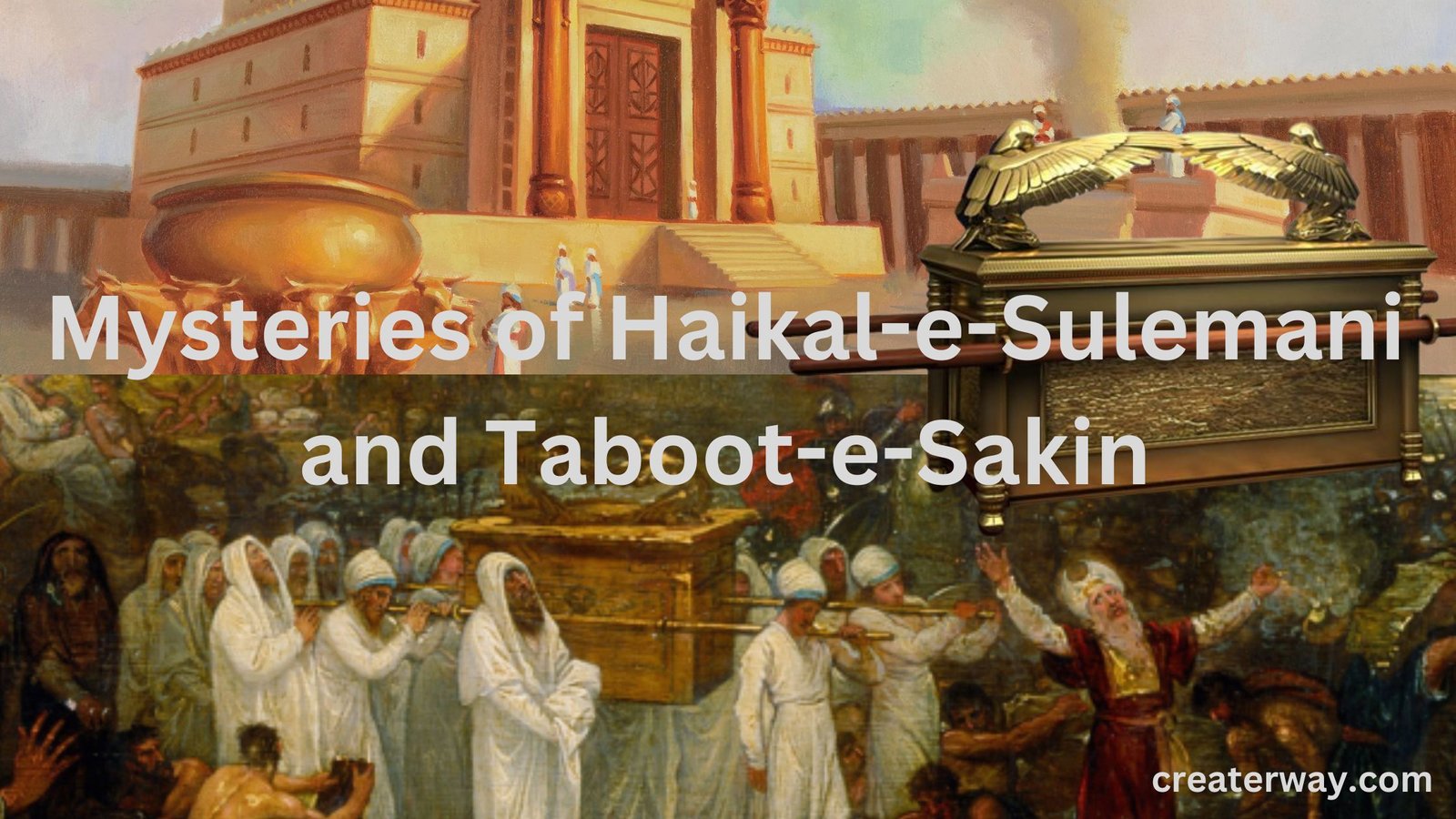EDUCATION
Mysteries of Haikal-e-Sulemani and Taboot e Sakina

Taboot e Sakina
Within the domains of mythology and mysticism, there are items that are enmeshed in folklore and tradition, capturing the interest of both believers and historians. Two of these ethereal artifacts, Taboot-e-Sakin and Haikal-e-Sulemani, are particularly revered in Islamic tradition. Together, we will investigate the fascinating history of these mysterious items and attempt to solve their secrets.
Taboot e Sakina:
Often referred to as the Ark of the Covenant in Judeo-Christian tradition, Taboot-e-Sakin is said to be a sacred item that has been referenced in Islamic writings. The English translation of “Taboot-e-Sakin” is “Ark of Tranquility”. Islamic tradition claims that it was a holy container holding spiritually significant artifacts.

Taboot-e-Sakin’s history begins with Prophet Musa (Moses), peace be upon him. Prophet Musa was given divine orders to build the Ark as a storage facility for the Tablets of Law (the Ten Commandments) and other holy relics, as related in the Quran and Hadiths. It served as a representation of the Israelites’ covenant with God.
The Israelites are claimed to have taken the Ark, which is said to have miraculous abilities, with them while they wandered through the desert. But once the Solomonic Temple in Jerusalem was destroyed, its locations were unknown. Several beliefs have been passed down in Islamic history regarding its destiny, such as its ascent to the sky or its preservation in a secret place.

Many people have claimed to hold Taboot-e-Sakin or to know where it is, but its actual nature is still unknown and the subject of conjecture. Some people think its reappearance at the end of times will be a portent of the end times.
Here is what Surah Al-Baqarah, Ayah 248 says:
“وَقَالَ لَهُمْ نَبِيُّهَمْ إِنَّ أيَةَ مُلْكِهِ أَن يَأْتِيَكُمُ التَّابُوتُ فِيهِ سَكِينَةٌ مِّن رَّبِّكُمْ وَبَقِيَّةٌ مِّمَّا تَرَكَ آلُ مُوسَى وَآلُ هَارُونَ تَحْمِلُهُ الْمَلَائِكَةُ إِنَّ فِي ذَلِكَ لَآيَةً لَّكُمْ إِن كُنتُم مُّؤْمِنِينَ”
This corresponds to:
“And their prophet answered them, ‘Yes, a sign of his rule is that the box that contains assurance from your Lord and a portion of what the families of Aaron and Moses had left, borne by the angels, will come to you. If you believe, then there is a sign for you in that. (Quran 2:148)
This line alludes to the words said by Prophet Samuel (peace be upon him) to the Children of Israel concerning the omen of Saul’s (Talut’s) coronation as their king. It speaks of the arrival of the Taboot (chest), borne by angels, containing assurance and relics from the families of Moses and Aaron. This chest,
known as Taboot-e-Sakin, holds significance in Islamic tradition and is associated with the Israelites’ history.
Haikal-e-Sulemani:

Until the time of Prophet David (peace be upon him), there was no special arrangement for keeping this chest, and a separate tent was set up in place of the ark. Prophet David (peace be upon him), following God’s command, began the construction of God’s house, which is exactly where Masjid al-Aqsa stands today. However, this magnificent house was completed during the reign of your son, Prophet Solomon (peace be upon him), and it is known as the Temple of Solomon.
He took away not only the wealth but also the Taboot-e-Sakina from here. As a result of this destruction, there is nothing left of the original temple today.
Where is the Taboot e Sakina now?
As a consequence of all this devastation, the Taboot-e-Sakina vanished without a trace, and no sign of it was found. Even today, many experts in ancient artifacts, especially those related to the Jewish religion, are tirelessly searching for it. Hoping to rediscover the spirituality that was once bestowed upon them.
Various theories have been proposed about the current whereabouts of the Taboot-e-Sakina, but English Christians and Jews have conducted extensive research on it. However, they could not agree definitively on one point.
But the theory that seems most plausible to me is that at this time. This chest or Taboot is buried somewhere in the palace of Prophet Solomon (peace be upon him). It is still lost in Palestine, where Jews have been trying to find it for quite some time now. And every day, they continue to excavate in Jerusalem, which is the same place where Prophet Solomon (peace be upon him) built it with the help of jinns.

Solomon’s Temple
source: metmuseum.org
What is Happened to it
Efforts are still underway to find its foundations today. This chest is also referred to as the Temple of Solomon. This theory was presented by the biblical archaeologist Ritmeyer Marshall in 1996. He provided many pieces of evidence for it, which you can easily find on the internet.
Nevertheless, there are many theories about it. And I also believe that this chest is still buried somewhere within the palace of Prophet Solomon (peace be upon him). Some people also share other famous conjectures about this chest. Some historians suggest that it was taken to Africa. There is a historical church in Ethiopia where this chest is said to be present, and there are also images of it. However, Jewish priests do not recognize it. Some people have suggested that it was buried in the mountains of Suruga, Japan, by a king. But Japanese archaeologist Takané Masanori made unsuccessful attempts to locate it.
A renowned archaeologist, Ron Wyatt, has said that it is present in the Middle Eastern Arab countries. According to some people, efforts to find it should be made in the region of England. Some historians point towards a region in Scotland. Another theory is that this ark is not present in the world anymore; God has taken it back to the heavens due to humanity’s misdeeds. Another theory suggests that it is lost inside a cave near the Dead Sea, and excavations have been carried out in several places in search of this cave.

